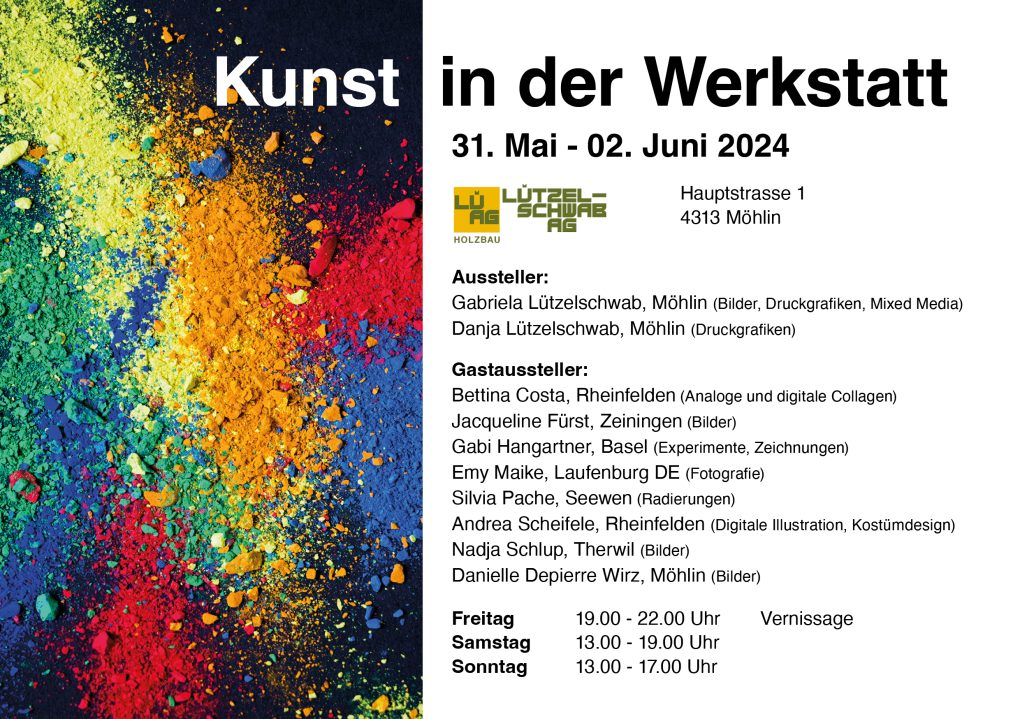
31 May – 02 June 2024
Open to the public:
Friday 19h – 22h Vernissage
Saturday 13h – 19h
Sunday 13h – 17h
Lützelschwab Holzbau AG
Hauptstrasse 1, 4313 Möhlin, Switzerland

ARTE
Magden – 28 February 2023
fricktal.info
After a successful year 2022 with two special exhibitions, the Magidunum Association is pleased to present the Dandelion Exhibition with Christine Bühler again this year in addition to the regular seasonal exhibitions in spring, summer and autumn. We will start with the spring exhibition in March.
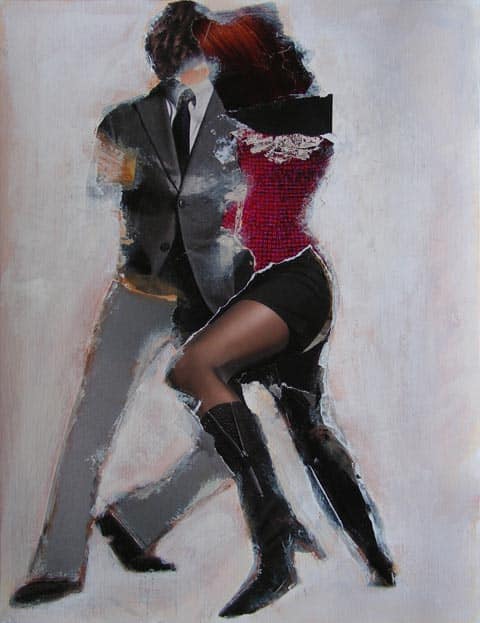
The following artists will present their works:
Agnes Steinle from Möhlin shows her paintings inspired by nature and everyday life, which she brings to canvas or cardboard with acrylic, ink, charcoal, pencil, pastel chalk and watercolor.
Agnes Keller from Magden combines ceramics with driftwood. She also draws her inspiration from nature. The forest and the lakeshore provide her with the material she needs for her works. Her angel figures are very well known.
Bettina Costa from Rheinfelden, who grew up in Argentina, shows paintings and collages (picture). Her originally realistic style has changed into the abstract. With the theme of tango, she shows movement, passion and music in her works.
The exhibition will take place from 10 to 26 March. On 10 March, there will be a vernissage. Opening hours: Fridays from 5 to 8 p.m. and Saturdays/Sundays from 2 to 5 p.m.
During the exhibition, the village museum is also open. The next exhibition in the Magidunum Museum Gallery will be the Dandelion Exhibition from 31 March to 2 April.
Magden – Tuesday, 28 February 2023 02:10
FRICKTAL24.ch (Free internet newspaper for the Frick valley, Switzerland)
By: Lana Regtering
After a successful year 2022 with two special exhibitions, the Magidunum Association is pleased to hold the Dandelion Exhibition with Christine Bühler again this year in addition to the regular seasonal exhibitions in spring, summer and autumn.
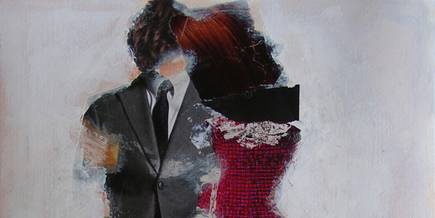
Detail from the painting Tangollage by Bettina Costa
Starting with the spring exhibition in March, the following artists will present their works:
Agnes Steinle from Möhlin shows her paintings inspired by nature and everyday life, which she brings to canvas or cardboard with acrylic, ink, charcoal, pencil, pastel chalk and watercolor.
Agnes Keller from Magden combines ceramics with driftwood. She also draws her inspiration from nature. The forest and the lakeshore provide her with the material she needs for her works. Her angel figures are very well known.
Bettina Costa from Rheinfelden, who grew up in Argentina, shows paintings and collages. Her originally realistic style has changed to abstract. With the theme of tango, she shows movement, passion and music in her works.
The exhibition will take place from 10 to 26 March. On 10 March, there will be a vernissage.
Opening hours: Fridays from 17:00 to 20:00 and Saturdays/Sundays from 14:00 to 17:00.
The village museum is also open during the exhibition. Come in and be surprised by the Taunerhaus in its original state.
The next exhibition in the Magidunum Museum Gallery will then be the Dandelion Exhibition from 31 March to 2 April.
Magidunum Association
«fricktal24.ch – the online newspaper for Fricktal»
Street art: VEREDA DEL TANGO – Km 10465
3 January 2023
Dario Sigismondo Art Gallery
Carrer dels Mirallers 5
08003 Barcelona, Spain
PRINTS AND COLLAGES
Vernissage: 10 November 2022 from 17:00
Galerie Katapult is pleased to announce the upcoming exhibition of works by Daniel Oertli and Bettina Costa
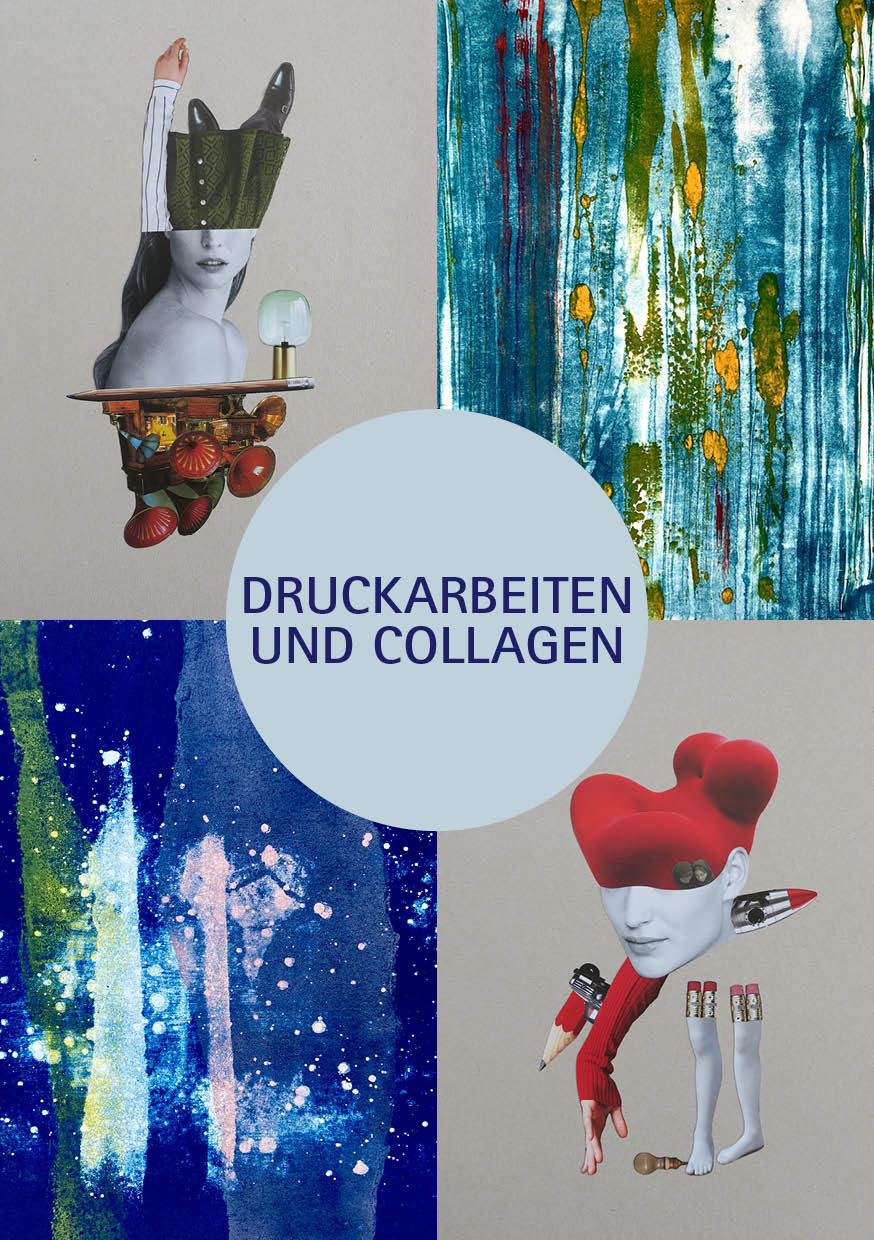
Duration of the exhibition: 07 November – 03 December 2022
Bettina Costa will be present at the gallery on the following days:
10 November and 03 December
or by appointment (079 273 2025 – bettina.costa@coaster.ch)
Open to the public: Tuesday to Friday 14:00 – 18:30, Saturday 11:00 – 16:00
Galerie Katapult
www.galeriekatapult.ch
Vernissage:
Friday 8 April 18h – 21h
Open to the public:
Saturday 9 April 11h – 19h
Sunday 10 April 11h – 17h
Monday 11 April 11h – 19h
Tuesday 12 April 11h – 19h
Wednesday 13 April 11h – 19h
Thursday 14 April 11h – 19h
Friday 15 April 11h – 19h
Saturday 16 April 11h – 19h
Finissage:
Sunday 17 April 11h – 15h
Galerie Katapult
St. Johanns-Vorstadt 35, 4056 Basel, Switzerland
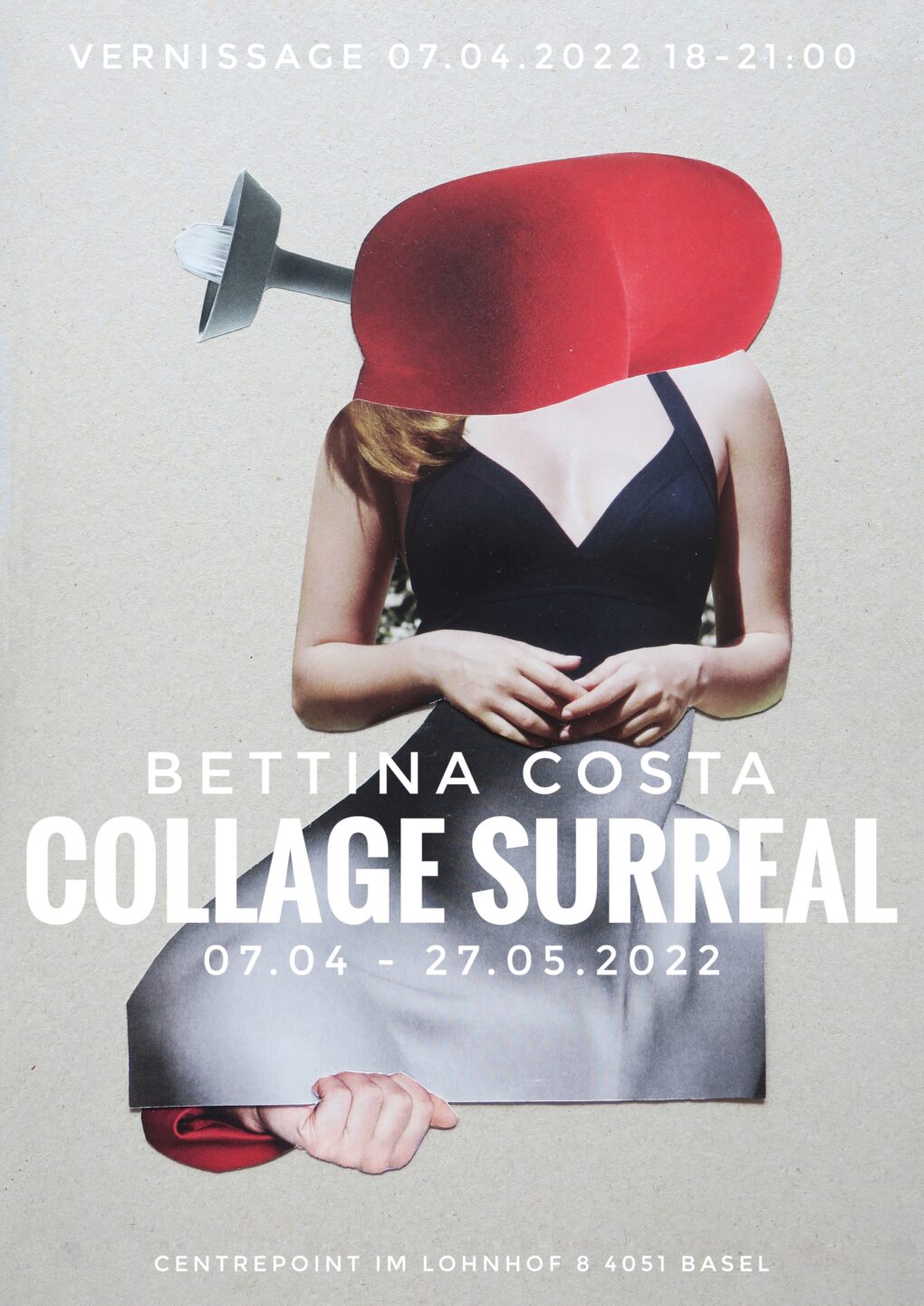
7 April – 27 May 2022
Vernissage:
Thursday 7 April 18h – 21h
Open to the public:
Tuesday 9h – 13h
Wednesday 9h – 13h
Thursday 9h – 17h
Friday 9h – 13h
First Saturday in the month 11h – 13h
or by appointment
Centrepoint
Im Lohnhof 8, 4051 Basel, Switzerland